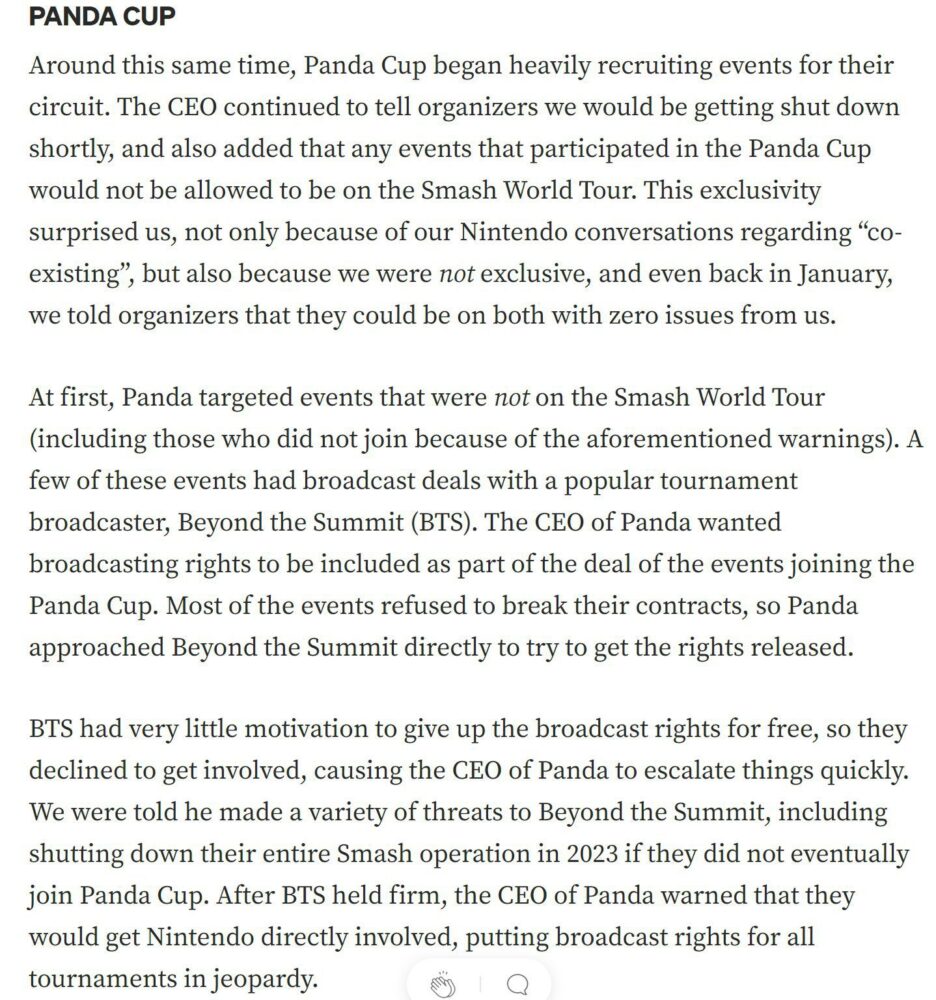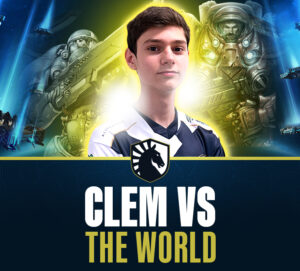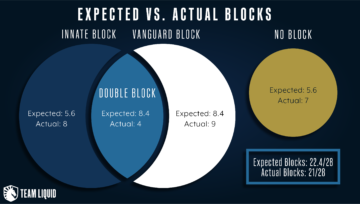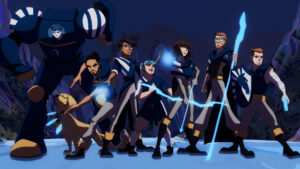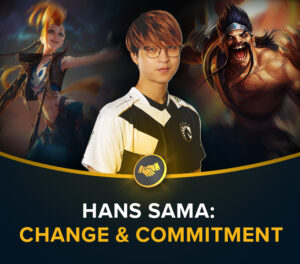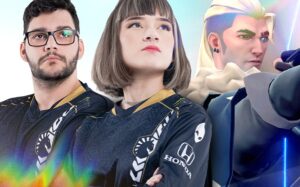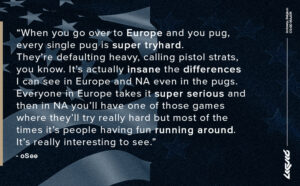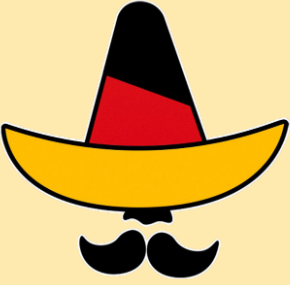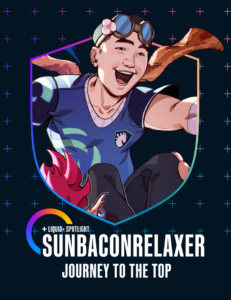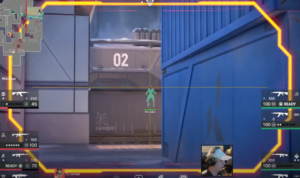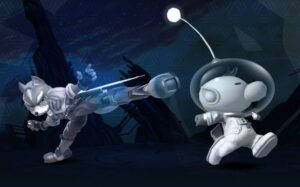I am sitting across from Juan “Hungrybox” Debiedma, a three-time Super Smash Brothers Melee world champion and recently award-winning content creator, at the 2022 installment of the Melee-centered Apex tournament series. He is a permanent member of Melee’s “Five Gods,” the title given to the game’s most dominant and historically untouchable players. It’s been a while since the divine ruled the game, though. Things are different now.
The game has grown too big for house tournaments and college venues; the two of us sit in cushioned office chairs lining the VIP area of Apex’s sprawling convention center. On our way to the location, several people—few of whom Juan seemed to know—shared words of approval and solidarity. An air of celebrity hangs around him. He is aware of it, at least. At times he meets up with fans and leans into the idea of “Hungrybox,” the invincible—yet family-friendly—Melee god. Other times, he shies away, huddling up in the quiet seclusion behind the stage.
(“Other times, well…”)
Hungrybox has been playing for a while. For twelve unbroken years, he’s been at the peak of Melee competition—and still continues to win majors. Throughout this time, he’s seen Melee’s growth firsthand. He began in what the community calls the “grassroots era,” or the time when organization of Melee events was funded primarily by individuals. As his status as one of the Five Gods grew, he was at the forefront of Melee’s explosion into a full-fledged esport; now, brands are a regular part of the scene, providing funding for 2022’s jam-packed major schedule.
Did somebody order a SPECIAL announcement? 🤔@PapaJohns is coming to Super Smash Bros. tournaments across America in 2022! 🤩🍕
Grab a slice and get ready… it’s gonna be a big year. #PapaJohnsSSB pic.twitter.com/9QVBNnDJSa
— Beyond the Smash (@BTSsmash) April 8, 2022
(“Including a marked shift from No Johns to Yes Johns.”)
Melee’s transition from grassroots to esports has not come without cultural consequence and individual sacrifice—tradeoffs Hungrybox has become intimately familiar with, both in his life as a grassroots competitor and his second life as a polished, brand-friendly Twitch titan—tradeoffs that continue to steepen as Melee enters its second life.
[Editor’s Note: This article is an opinion piece from top-level Melee player Logan Dunn. So it doesn’t represent the opinions of Liquid staff or the org as a whole. But it does reflect the well-considered thoughts of someone who has more stake and experience in Smash and its community than most.]
What was playing in the grassroots era of Melee like compared to the community we have today?
“I think it was less about fandoms—well, there were still fans—but it was less professional. They didn’t have these giant stream setups, stuff like that. We take a lot of things for granted that we have. Grassroots is what it sounds like. Usually the players themselves [were] bringing the TVs to the venue, the players themselves [were] paying their way to events—sponsors weren’t really a thing back then. And it was more of a community—we’re all trying to bring everyone together here, rather than every man for himself, which is kinda what it feels like now. It had to start somewhere, and the only place you could really start something this big is from humble, but close-knit beginnings.” – Hbox
What do you think we’d have to do to make it feel less “every man for himself”?
“I mean, I don’t know if you can go back, but it would be nice to have more social aspects to a tournament. In the middle of a tournament you have a one-hour lunch, where everyone can meet each other, you know what I mean? I would love for tournaments to have, instead of these kooky side-events and like, crew battles, literally just an hour and a half, ‘we’re going to a restaurant, or a bar, or hanging out.’”
This feeling of alienation and division isn’t just isolated to the players. Prominent Melee figureheads and community members are beginning to express strongly negative reactions to the perceived “esports-ification” of their game. Some have gone so far as to state that the influx of funding is not worth the cultural cost, and that Melee is better off returning to its roots as a bottom-up grassroots movement of individuals.
(Bobby “Scar” Scarnewman: formerly a competitor, now a Melee commentary superstar.)
Are they right? It’s hard to say, reasonable to wonder. Especially given how often Smash seems to teeter on the edge of tier 1 esport and total annihilation.
In this decade, Smash hasn’t gone a year without existential threat. In 2022, the threat came just this month. The Smash World Tour—a community-organized circuit of over 6,400 Smash events culminating in a December $250,000 championship—recently announced its cancelation, after being abruptly shut down by Nintendo for operating without a commercial license. (A license Nintendo had previously indicated would not pose a problem to the Tour, then later denied without specific reasoning.) What’s more is that the Tour had been operating at the same time as the Panda Cup, a collaboration between Nintendo and the prominent esports organization Panda Global. In the Smash World Tour’s official statement of cancelation, they reveal that Panda Global repeatedly threatened other tournament organizers participating in the Smash World Tour—and eventually the Tour itself—with Nintendo involvement (and subsequent cancelation) if they did not break their contracts and cede broadcasting rights to the Panda Cup.
(A portion of Smash World Tour’s statement regarding the Panda Cup.)
In the midst of the reveal and subsequent fallout, several accounts have come out claiming that Panda Global’s CEO, Alan “Dr. Alan” Bunney acted alone in his attempts to get the Tour canceled, and that the rest of the organization had been left in the dark. Since then, Dr. Alan has released a statement detailing his departure from his CEO position and blaming BTS and VGBC for the cancelation. It was full of holes.
In response, Boback “Boback” Vakili—organizer of the biggest Melee tournament series GENESIS—spoke to Dr. Alan’s motivations. According to him, Dr. Alan wanted to become the “savior of smash” by fully esports-ifying the Smash community, a community which he believed would crumble without his intervention and never reach tier 1 status. He would kill Melee to push Smash Ultimate forward, sanitize away the community’s last vestiges of grassroots culture, and finally make Smash esports.
This isn’t the first time Smash tournaments have been jeopardized, but Smash World Tour’s cancelation could mean treading waters far more treacherous than ever before. For players, it means a year of invalid results and wasted money. For VGBC, canceling its tournaments means taking on a potentially fatal amount of financial losses. And for the community, it means living again with the paralyzing fear of litigation by Nintendo that’s characterized Smash’s efforts to expand as an esport. (See EVO 2013.)
(Many players traveled to other countries to gain points for the tour, some even using their funds to travel to multiple continents for a shot at winning big in the championships.)
The specter of Nintendo is a big part of why many in the Smash scene look on esports with a wary eye. Dr. Alan’s vision—while very misguided—wasn’t totally unfounded. The most obvious way for Smash to evolve in esports would be a Nintendo partnership. It’s just that every deal with Nintendo feels like a deal with a devil—a Faustian bargain with a history of sinking entire communities.
Project M (later rebranded Project+) is a mod of Super Smash Brothers Brawl, originally aimed towards making the game feel like Melee. As a mod of a Nintendo IP, it has been met with countless obstacles, and now operates almost entirely underground with coded advertisement—the tournament organizers will list the game as Brawl or “unnamed game,” streaming the matches through guerilla Twitch channels. The dark comedy in it all: the original reason Project+ went underground was due to a partnership between Nintendo and—wait for it—VGBC.
Now, through both oppression and circumstance, the game will remain grassroots for the foreseeable future, a beautiful experiment turned into a community of mutual castaways. But Nintendo’s side of the bargain doesn’t quite end there. A lot of those previously involved with Project+ ended up switching over to Melee after VGBC’s decision, due to both the similarity in games and Melee’s larger community size. Here’s the issue: Nintendo has placed casters who previously commentated the game on blacklists from their Panda events—and with future tournaments potentially requiring licenses, many talented commentators worried that they would be muscled out of their careers over VGBC’s deal signed years ago.
(Wisely, a Project+ player and caster who has transitioned over to work in Melee.)
After witnessing this history of bad deals with Nintendo repeat itself, accompanied by the bombshell reveal that Dr. Alan tried to weaponize Nintendo to try to force the space into his vision of tier 1 esports, it’s not so hard to understand why parts of the Smash community would rather stay grassroots. At the same time, seeing the massive funding sponsors were able to offer the Tour and the Panda Cup, seeing Ludwig use his profile to create powerful new styles of Smash competition, and seeing how esports may be the only way Melee players can compete full-time and push the game to its limits—seeing all that, it’s clear why the esport life has its appeal too.
In this conflict, a question arises: what does the community truly want? If we want to answer, it’s worth investigating why Smash has lived so long in the first place.
As someone involved with esports and as someone who has witnessed firsthand the rise and fall of many games—what do you think is most crucial to the lifespan and growth of a gaming community?
“I honestly think it’s the quality of the game. It’s what brings the amount of people it does. Which is what puts Melee in a unique situation—extremely high-quality game, beautiful physics that you don’t see literally anywhere else. But, it’s with Nintendo, which means we don’t have corporate backing, which means we have to put the money in ourselves. Luckily, it’s so popular, there’s always people and viewership.” – Hbox
The physics and quality of Melee are properties that corporations have been working to emulate in their development of new esports. 2021’s Nickelodeon All-Star Brawl and 2022’s Multiversus are branded forays into the world of platform fighters. In both games they have drawn from Melee’s wide variety of movement options, taking aspects of the fighter’s wavedashing, dashdancing glory. Yet, both have fallen off significantly in a short period of time—Multiversus is at a mere 1% of its launch numbers, and All-Star Brawl is completely dead. What gives?
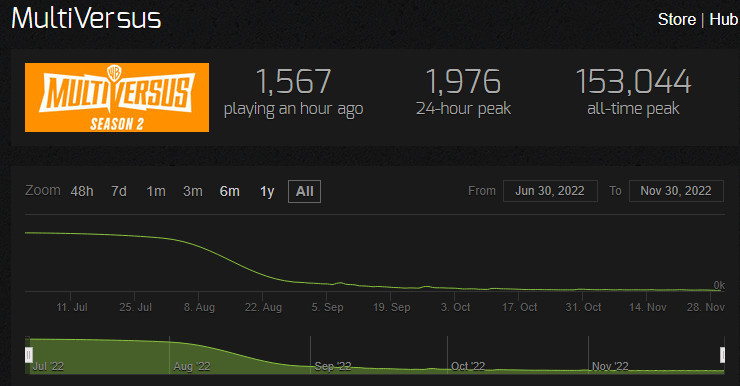
(Yikes.)
We’ve seen a rise in alternative platform fighters trying to get a foothold in the market, but they don’t seem to be doing well numbers-wise.
“Yeah, with Multiversus, I warned everyone what was going to happen if they focused on doubles—it was going to dwindle and fall off, which it has.” – Hbox
Hungrybox looks away. There’s a sadness in his eyes: during both of these games’ releases, he had grinded them and made promotional YouTube videos encouraging others to play the game alongside him. Some part of him seems invested in their success, to the point of hosting a $5000 All-Star Brawl circuit. Maybe, Hungrybox wants to see other companies reward a platform fighting community for the love of their game in the way Nintendo never could—or, for one to realize the dream of a tier 1 esport that still preserves some of that grassroots feel.
Either way, it’s not the quality of the game, Hungrybox thinks, that holds the new titles back—it’s the format.
What do you think makes doubles less sustainable for a game?
“You need the aspect of like, an entity versus an entity. And when it’s doubles, it’s four people competing for that narrative, in a weird kind of way. A lot of times, entertainment comes in analyzing the human condition, the human form: one guy, his amazing talents but all his flaws.”
In doubles, which many companies are choosing to focus on in their platform fighters, there are rarely static teams; often, players rotate and swap between majors. Because of this, the narrative is split between four separate people, and this creates an issue of scale with tracking the individual storylines of the players. These storylines are the point of connection between us and the screen—we empathize with a player during a major setback, or yell with joy when they break through a personal barrier.
But while Hbox doubts doubles, it’s worth noting that the most esports-successful platform fighter outside of Smash is probably Brawlhalla—a doubles-centric game that completely flaunted many of Smash’s design principles. It’s also worth questioning if any company could create another Melee—even if they wanted to. After all, Nintendo never really meant for Melee to be all that it was. A product of a very rushed development schedule, it’s an open question if something like wavedashing would have survived if Sakurai and his developers had the time to see just what it could do. How many bugs would have been squashed, techniques hamstrung? Could Melee even be created in the modern, made-for-esports, patch-reliant landscape that fighting games live in now?
(In fact, Brawlhalla has the largest fighting game prize pool in the world!)
The answer is simple and complex: Melee was created, even if it couldn’t be replicated today. Perhaps, there are games that could only be created then and games that can only be created now. But even more importantly, there might be gaming communities that can only be created now, with our knowledge of our grassroots beginnings and our previews of what our esports future might look like. Instead of picking one or another, we find ourselves at the unique position of being able to pick both and synthesize something entirely new.
Our process of communal introspection to find the border of our esports future and our grassroots past will be difficult, but not impossible.
That introspection may mean looking forwards, using the Smash community’s forays into esports as data points—what exactly went wrong with the Panda Cup, and what can we do to better protect our community’s talent in the future? Measures taken must be preventative—they must stop rogue actors from being able to consolidate power entirely, not just penalize them afterwards.
Dr. Alan threatened individual, non-Tour events in his attempts to gain leverage in the community. The power differential between a T.O. and Panda is immense, and faced with this imbalance, some T.Os found themselves ceding to Panda’s demands. Moving forward, the Smash community may need greater unionization between T.Os. That unity—though not an easy ask—would allow the Smash community to better protect itself from threats, both external and internal.
Another issue arises: how do we approach Nintendo? For many games, developer support is the only path to tier 1 status—the amount of funding and advertisement a developer can provide is impossible to ignore, and the Smash community has fallen victim to this temptation many times before. Partnering with Nintendo is a deal that, at this point, may not be worth taking—even if it guarantees complete safety from C&Ds and cancellations. Smash is in a unique position to have a chance at organically reaching tier 1 status, having slowly built partnerships over time with many organizations in the esports world—even ones outside of it, like Papa John’s. As long as the Smash community is patient, these connections will bear fruit and lead to cash flow from sources much more sustainable than Nintendo. And, given the size we’ve reached by growing our roots, Nintendo doesn’t seem to want a full war against a united community either.
In finding Smash’s desired identity, we may want to look to our shared past for answers. What people crave about the grassroots era is the culture: the narratives were laser-focused on the game and its players, and rarely were outside concerns like financials and growth featured as common discussion points. It’s clear from a present-day viewpoint that, without moderation, this culture is idealistic and unsustainable; at the end of the day, the community has to sit down and figure out how the lights are going to stay on for the next event.
Yet, there is still value in this purity of spirit and focus on the narratives of the game. When the Smash documentary was released in 2013, the stories and the communal spirit it highlighted brought an entirely new generation of players into the game (affectionately called the “doc kids”). Even little glimmers of Smash’s grassroots spirit—moments like the Wombo Combo, or even the playful banter of The Yard—can grow massive and provide an entry-point into the community for future generations of players who will continue to keep it alive. In some ways, our roots are both the messiest parts of Smash and the purest parts of ourselves.
(The set design of The Yard, a podcast featuring many Melee content personalities, aims to evoke feelings of home and groundedness.)
It’s fitting to look back—after all, the largest chunk of Smash’s player base grew up with the game before the esport. As an entertainer and a perpetual striver, Hungrybox often looks back too—for his own answers, for the best version of himself.
What do you think the “best version” of you is—the version you want to present to the world?
“When I was like four years old. I wasn’t worried about so much stuff, I was just happy. It’s hard to get back to that. I feel like the best version of me is still coming; I haven’t hit it yet. I have so many things I want to improve on that are hard to improve on.”
You seem to mention a lot the idea of returning to childhood, that “old Juan” sort of thing.
“Yeah, it makes you wonder why you’re happy when you’re a kid. Is it because you have less responsibilities, or because you have less desires? I feel like when you desire too much, you suffer too much. It’s a little bit of a Buddhist idea. It’s easy to live life by wanting less. I wish I wanted less.”
For the Smash community, our simultaneous desire for more and fear of what “more” entails has resulted in schisms, both in the individual and in the scene. Often, we reminisce on how much more simple the community was, back when things were grassroots. It doesn’t work like that anymore, though; people work in the esports industry, and asking them to give up their livelihood is a hard bargain. As frightening as it may be, we’ve all grown up too. The box is opened now, and the future moves forward. The Smash community wishes they wanted less. Maybe they just want to want the right things.
Writer // Logan Dunn
Editor // Austin “Plyff” Ryan
Graphics // Felipe “Krust” Braga
